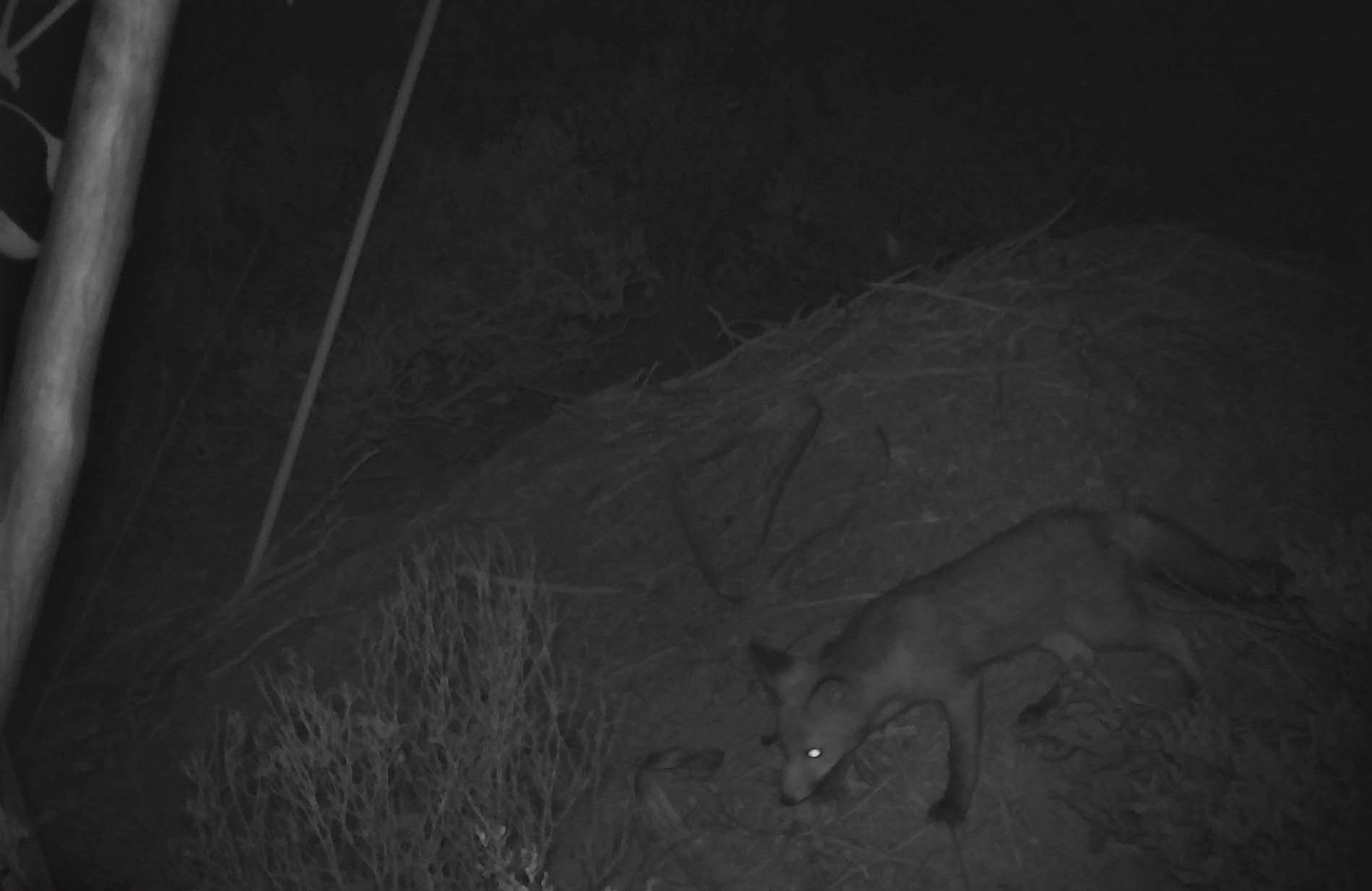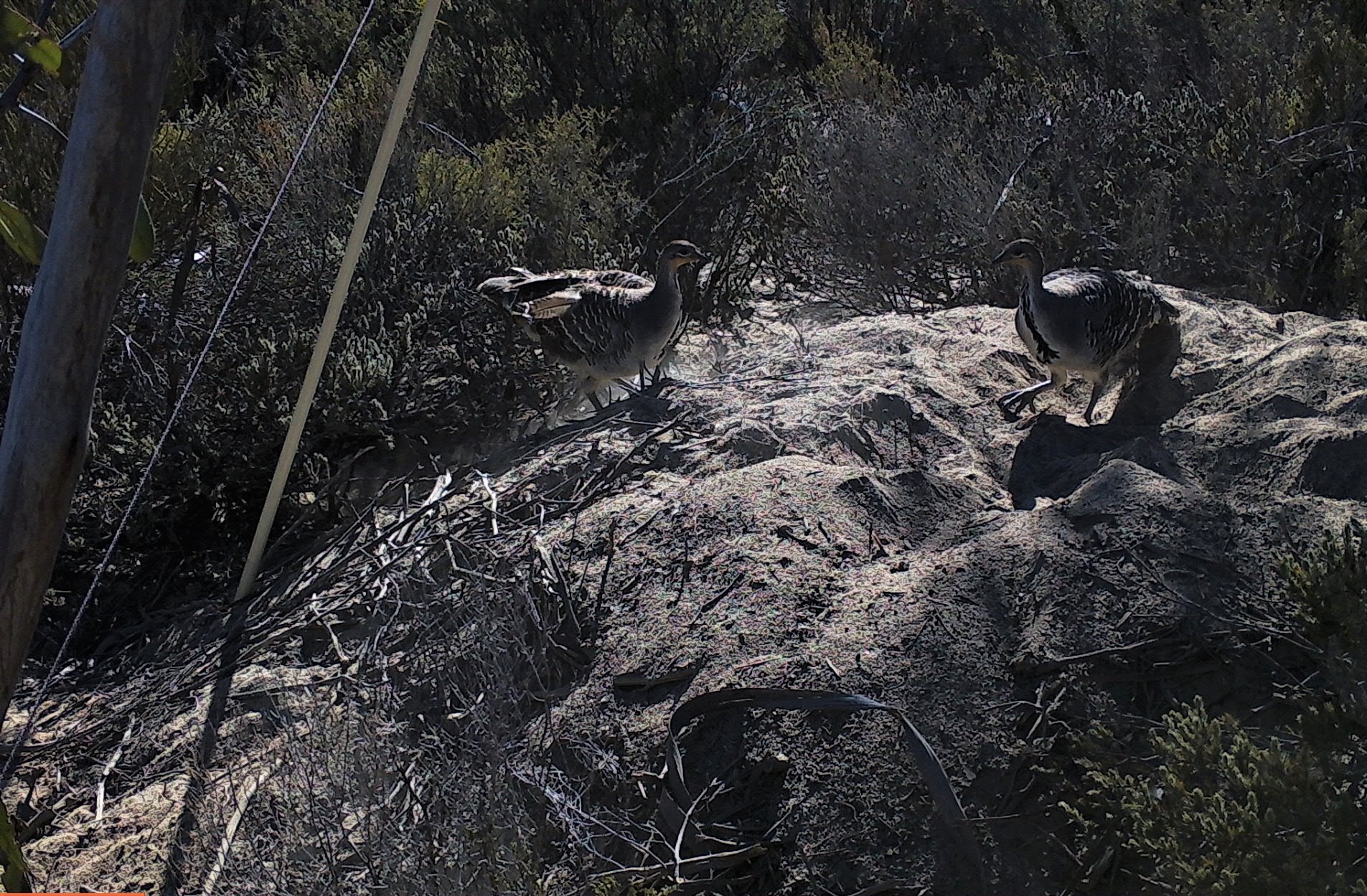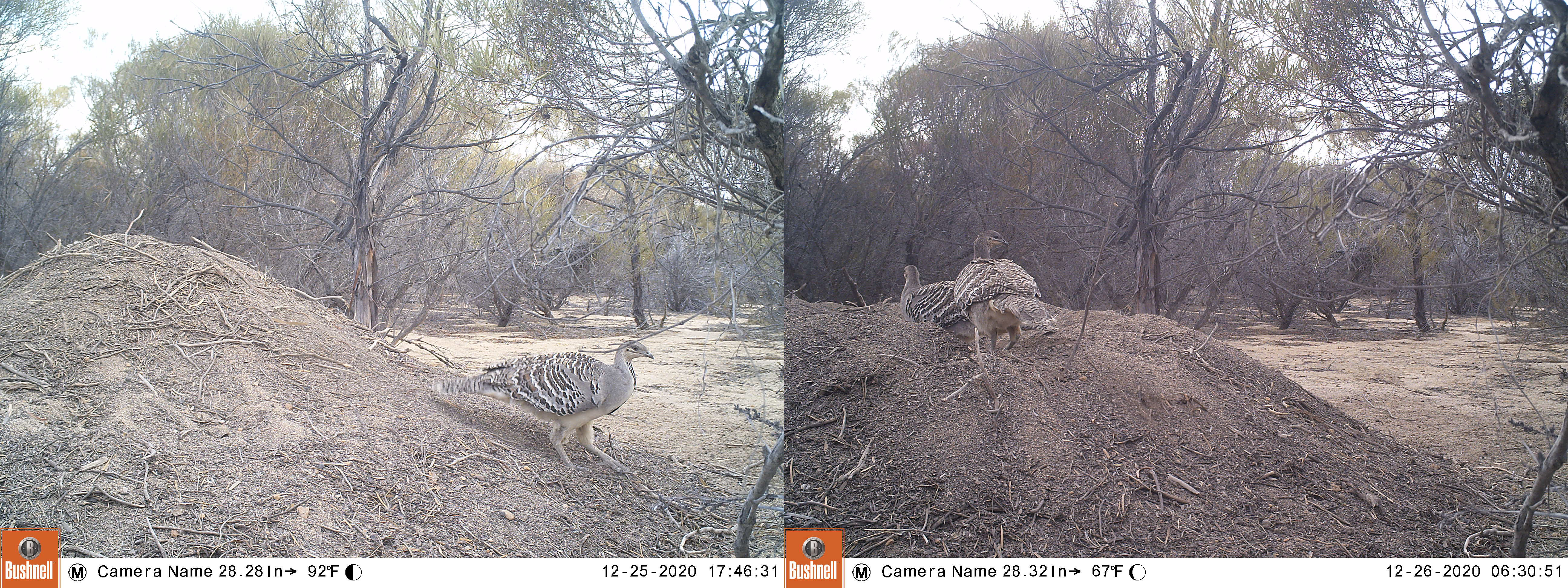The holidays are a time for family.
No different, it seems, for our local malleefowl, who were captured by Wheatbelt NRM’s motion sensor cameras near Hyden tending to their mounds over the festive season in preparation for hatching.
You can watch them do their thing in the video below.
The malleefowl is listed as threatened by the Australian and WA Government.
Since 1981, it is believed the habitat range of the species has shrunk by 28 per cent within WA.
The Wheatbelt is a highly productive habitat that has typically supported higher density populations of the bird – compared to more arid areas – but as this habitat has reduced the malleefowl has been squeezed into discrete remnant patches.
Other factors that have contributed to the decline of malleefowl include changing fire regimes, climate change, the ability for genetic exchange in fragmented landscapes and predation from foxes and cats.
Rabbit populations can also be a concern because they support higher numbers of mesopredators.

It is an elusive character, but as captured by our cameras, can be seen around central and eastern parts of the Wheatbelt.
The malleefowl is known for constructing remarkable nesting mounds, a large pile of leaf litter and sand scraped together by the bird’s strong legs.
As such they require a sandy habitat with leaf litter.
They are found in semi-arid to arid shrubland and low woodlands, characterised my mallee and/or acacia.

If you are interested in their protection, but have not seen a malleefowl before, keep an eye out when driving around the region and use our Malleefowl Recorder survey to record all sightings.
Wheatbelt NRM is currently working with landholders who have malleefowl habitat and active malleefowl populations on their property to protect the species.
This support includes:
• Support to fence remnant vegetation containing malleefowl habitat,
• Provision of seedlings to revegetate malleefowl habitat, and
• Support to address the threats malleefowl are facing.
If you are interested in protecting malleefowl on your property, click here to find out more, or contact project delivery officer Kate Nicol by emailing knicol@wheatbeltnrm.org.au.

These images, captured 12 hours apart, show the speed with which the malleefowl tends its mound.
This project is supported through funding from the Australian Government’s National Landcare Program.

